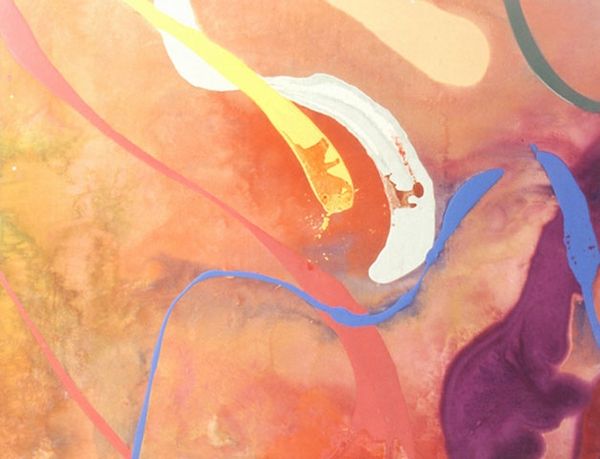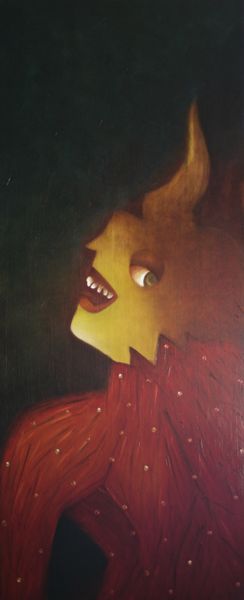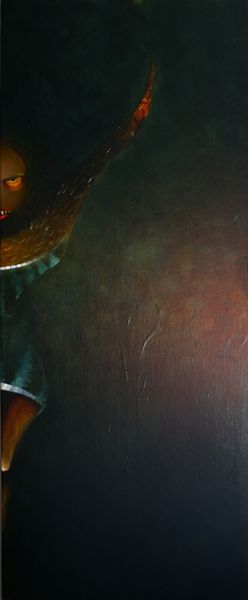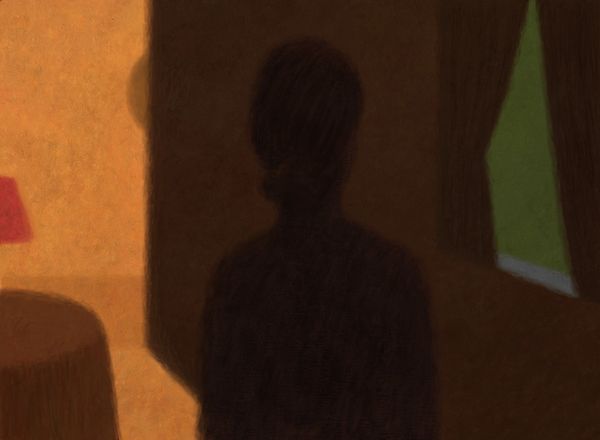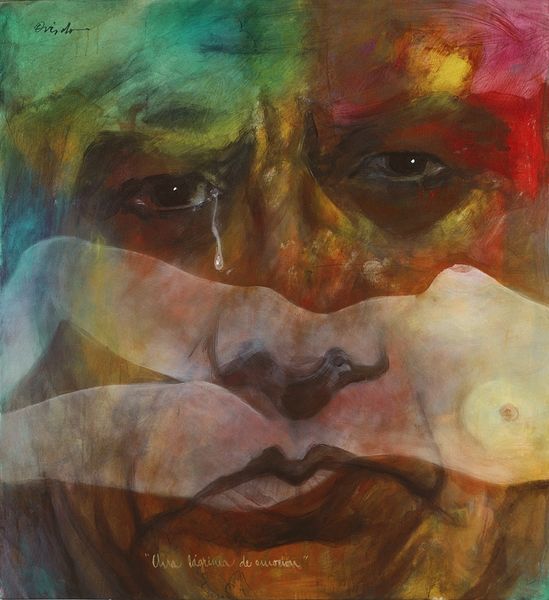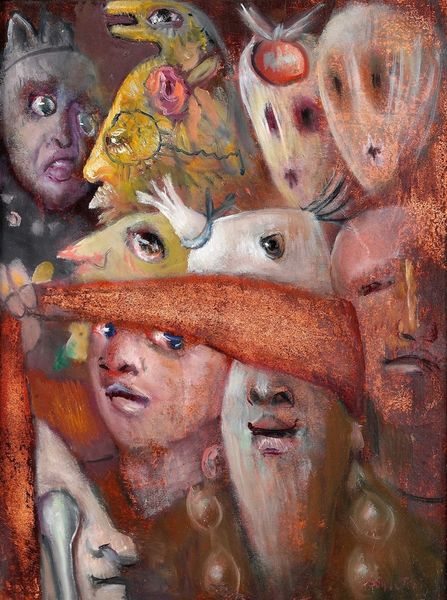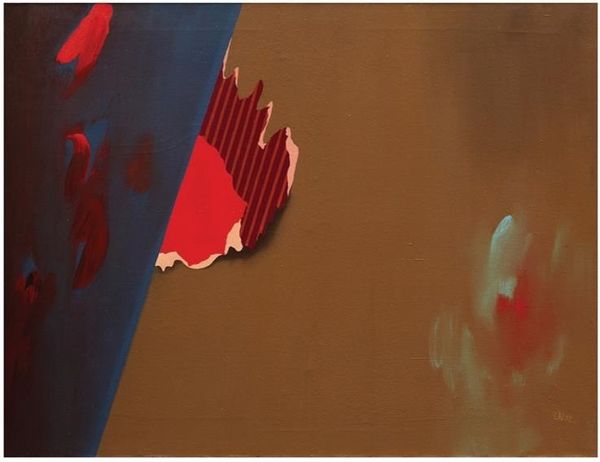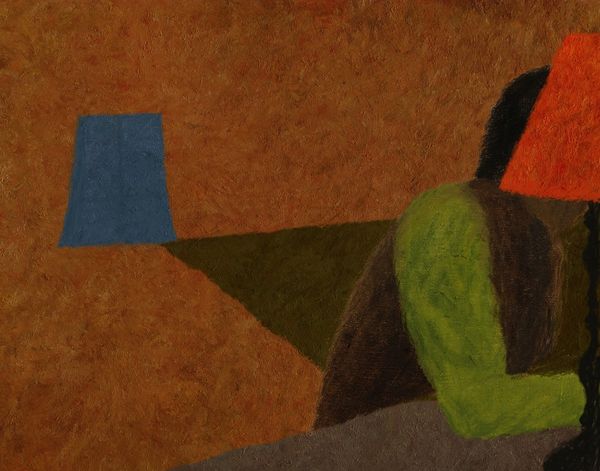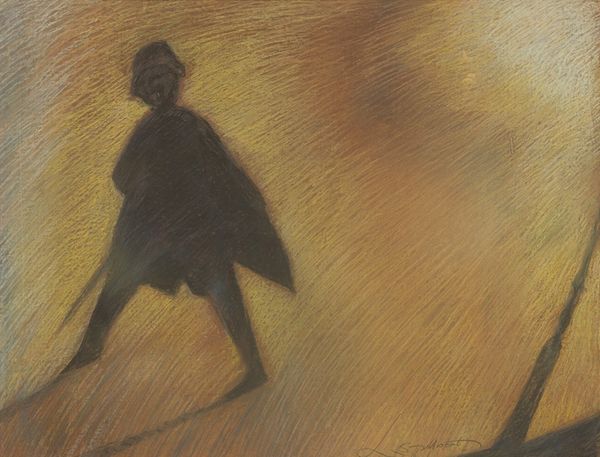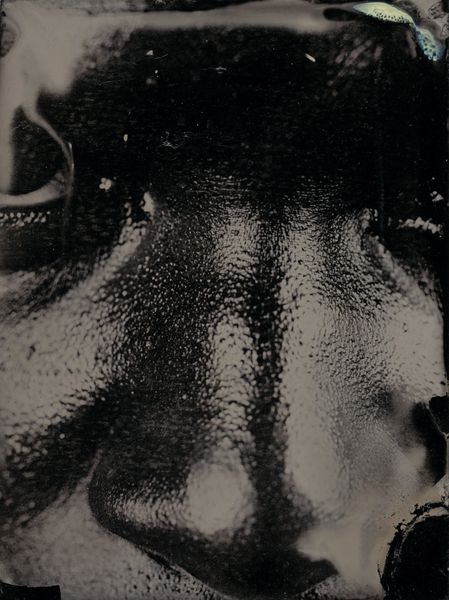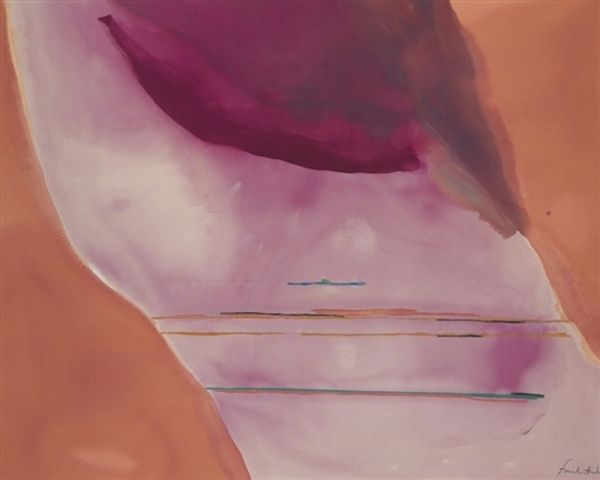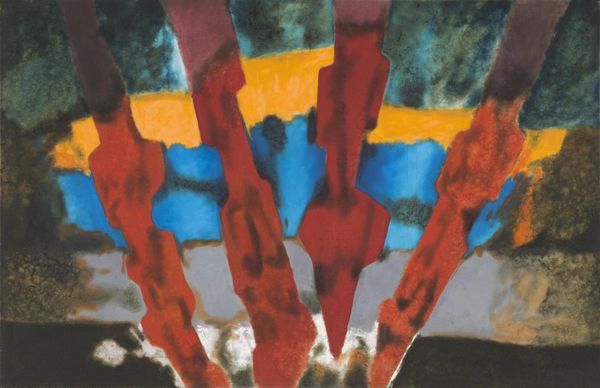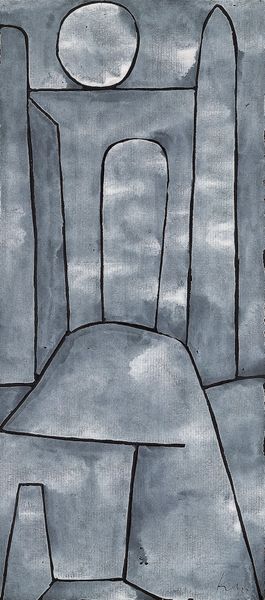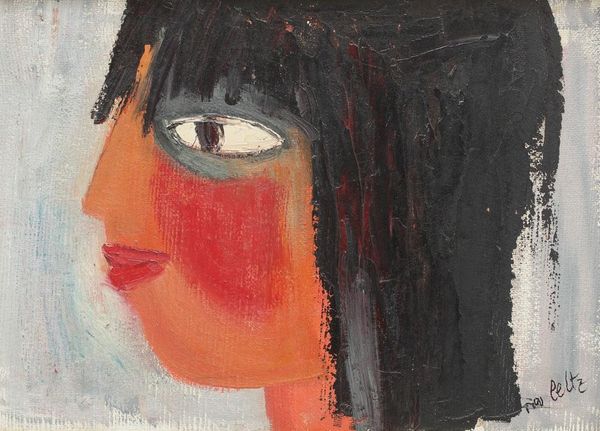
painting, oil-paint
#
portrait
#
painting
#
oil-paint
#
oil painting
#
portrait drawing
#
realism
Dimensions: 62 x 28 cm
Copyright: Nuri Iyem,Fair Use
Curator: Nuri Iyem's striking oil painting "Eyes," created in 1979, confronts viewers with an intense gaze. Editor: The sheer scale is disarming. These are not simply eyes; they feel like windows staring directly into my soul. There's something almost confrontational in their directness. Curator: Precisely. Consider the cultural context— the positioning of the subject within Turkish society during the late 70s. This was a time of political and social upheaval. How might this unyielding gaze challenge conventional portrayals? Editor: It’s a potent challenge. The eyes, the most expressive feature, are emphasized, while the rest of the face remains somewhat veiled, only hinting at identity with that patterned fabric near the bottom. Does the veil act as protection or confinement? Curator: A complex symbol, surely. The eyes, even magnified, retain their human quality; they convey weariness, perhaps, but also a resilience— an enduring presence amid the political struggles Iyem engaged with. Editor: Looking closer, you can see the subtleties in the application of the paint, how light is reflected, adding depth and warmth that prevent them from becoming severe. It also speaks to the rise of portraiture and its value within elite and academic art circles, doesn't it? Curator: Yes, and Iyem seems to both participate in and subvert the form. This painting also asks the viewer to examine their own gaze: are we passively observing, or actively engaging with the person represented? Eyes, traditionally "the windows to the soul," become a mirror. Editor: It definitely gives you pause, especially today. Given the visual saturation of modern life and the frequent exploitation of images for political ends, an artwork that compels contemplation on the simple act of seeing feels powerfully relevant. Curator: The intensity feels preserved across decades; perhaps we must recognize this not just as art, but a continuing act of seeing. Editor: A poignant testament to the human capacity to meet one’s gaze directly; it will resonate beyond its historical origins for years to come.
Comments
No comments
Be the first to comment and join the conversation on the ultimate creative platform.
